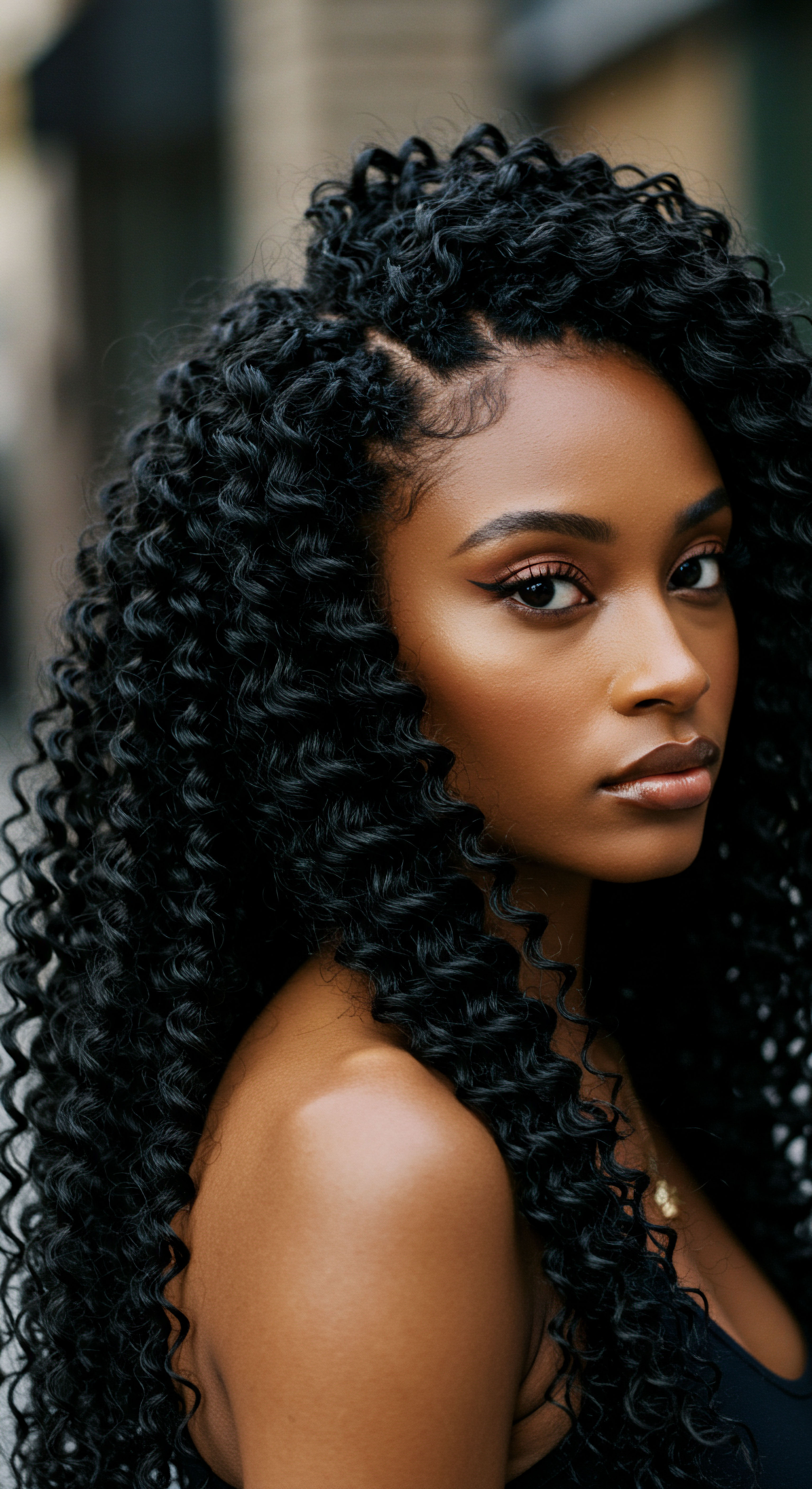
Roots
The strands we carry, a testament to time and lineage, often speak a silent language of their origins. For those with coils, this language is particularly rich, echoing through generations of wisdom passed down not through written decree, but through practiced hands and communal understanding. To truly grasp the ways ancestral hair care responded to the surrounding world, one must first listen to the hair itself, understanding its inherent structure and the deep connection it holds to heritage. This is a story etched in every twist and turn, a story of adaptation, resilience, and an intimate acquaintance with the elements.
Consider the very architecture of a coiled strand. Unlike straight or wavy hair, which tends to be round or oval in cross-section, coily hair often presents an elliptical, almost flattened shape. This distinct geometry contributes to its incredible strength when handled with care, yet also its susceptibility to breakage if mishandled.
The cuticle layers, those protective scales that line the outer surface of each strand, are less tightly bound and more prone to lifting in coily textures. This natural inclination for lifted cuticles, while offering volume, also permits moisture to escape more readily and environmental aggressors to gain easier access.
The very shape of a coiled strand speaks to its unique needs and inherent connection to environmental adaptation.
The distribution of natural oils, known as sebum, also plays a significant part. Sebum, produced by glands on the scalp, provides a natural coating that shields and moisturizes the hair. For coily hair, the path of this protective oil from the scalp down the length of the strand is a winding one, making it less efficient at coating the entire fiber.
This often leaves the ends particularly vulnerable to dryness, a condition exacerbated by arid climates or dry indoor air. Ancestral practices, refined over centuries, intuitively addressed these intrinsic characteristics, providing a blueprint for sustaining hair health in diverse environmental settings.
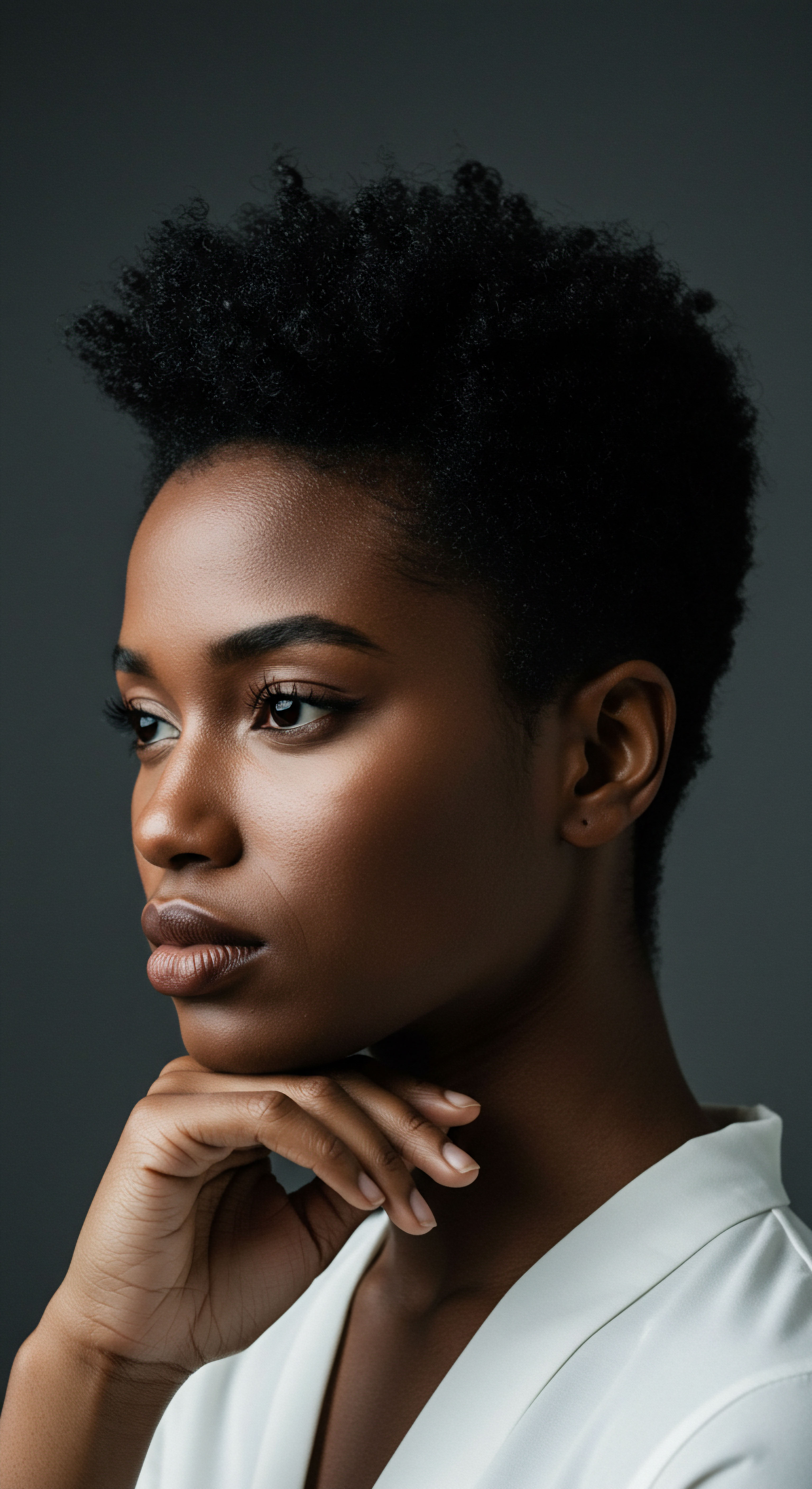
Understanding Hair Structure and Environmental Response
To appreciate ancestral responses, a deeper examination of how coily hair interacts with its surroundings is necessary. The Hygroscopic Nature of hair, its capacity to absorb and release water from the atmosphere, becomes particularly pronounced in coils. In humid conditions, hair absorbs moisture, causing the protein structure to swell. For coils, this swelling can lead to a loss of definition, increased volume, and what is commonly termed “frizz.” Conversely, in dry environments, hair releases water, leading to shrinkage, increased friction between strands, and heightened fragility.
The challenge of Environmental Particulate Matter, such as dust, pollen, and microscopic pollutants, is another aspect. Coily hair’s unique structure, with its many bends and curves, acts as a natural trap for these airborne particles. Without regular, yet gentle, cleansing, this buildup can weigh hair down, dull its appearance, and potentially irritate the scalp.
Furthermore, the sun’s ultraviolet (UV) radiation can degrade hair proteins, particularly melanin, leading to weakened strands and color alteration. Ancestral practices often included methods that provided a physical shield against these omnipresent elements.
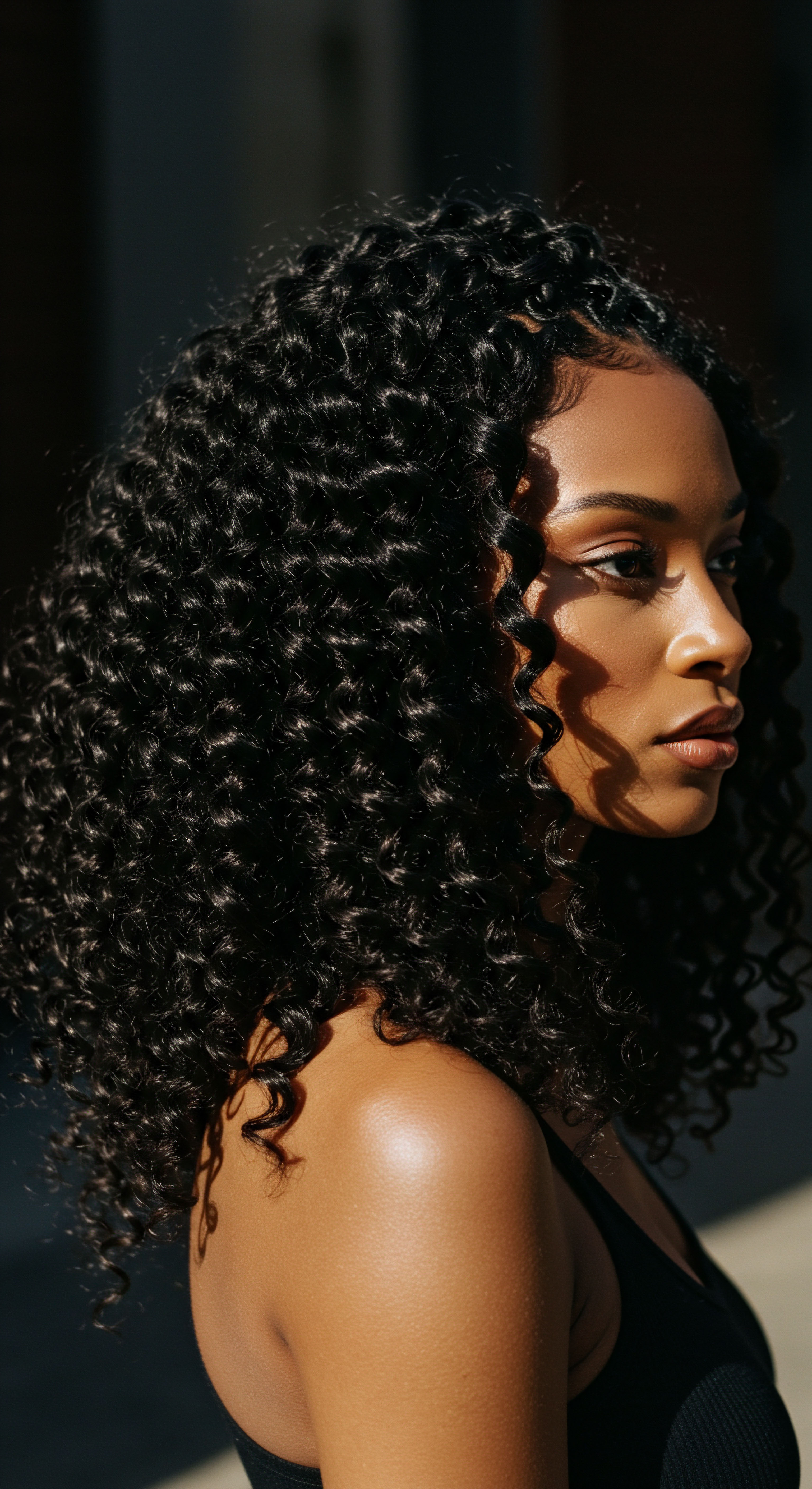
How Does Coil Pattern Respond to Atmospheric Conditions?
The very definition of a coil pattern, whether it presents as a tight spring or a more open helix, dictates its response to the atmospheric ballet of moisture and dryness. A tighter coil, with its greater number of bends per unit length, offers more surface area for moisture exchange, making it perhaps more reactive to humidity fluctuations. This inherent responsiveness means that a hair care approach must consider not only the presence of moisture but also its careful regulation.
For instance, ancient communities living in regions with extreme dryness understood the critical need for moisture retention. They observed how certain plant oils and butters, when applied to the hair, created a barrier that slowed water evaporation from the hair shaft. This was not merely cosmetic application; it was a sophisticated understanding of hair’s physics and chemistry, gleaned through generations of observation and experimentation. The choice of protective styles, which often involved braiding or twisting hair close to the scalp, also minimized exposure to dry winds and intense sun, preserving the hair’s internal hydration.
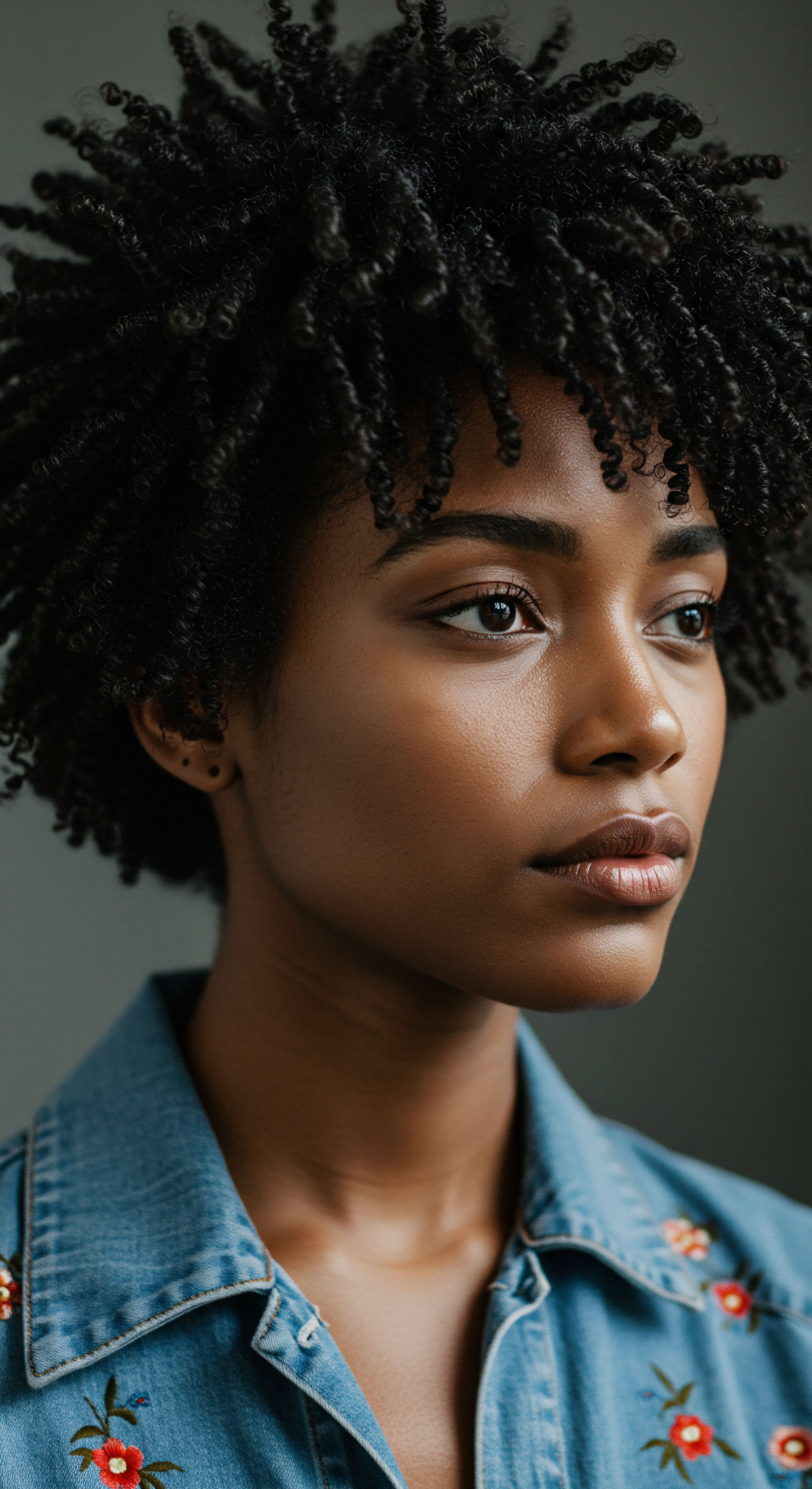
Ritual
Stepping beyond the fundamental understanding of hair, we arrive at the practical wisdom, the repeated gestures, and the thoughtful applications that shaped ancestral hair care. These were not mere routines; they were practices steeped in purpose, designed to work in concert with the hair’s inherent nature and the surrounding environment. This section considers the methods, the ingredients, and the tools that formed the backbone of care for coiled strands, demonstrating a profound knowledge of botanical properties and mechanical manipulation.
One of the most widespread and effective ancestral responses to environmental factors was the practice of Protective Styling. Across various cultures, intricate braiding, twisting, and wrapping techniques served purposes far beyond mere adornment. These styles tucked away the vulnerable ends of the hair, reducing exposure to sun, wind, dust, and friction.
By keeping hair gathered and contained, they minimized tangling, breakage, and moisture loss, acting as a physical shield against the elements. Consider the practical ingenuity of styles that could last for weeks, allowing individuals to navigate daily life without constant manipulation, thereby preserving the integrity of their strands.
Ancestral practices provided a practical wisdom for hair, responding thoughtfully to both hair’s inherent nature and the surrounding world.
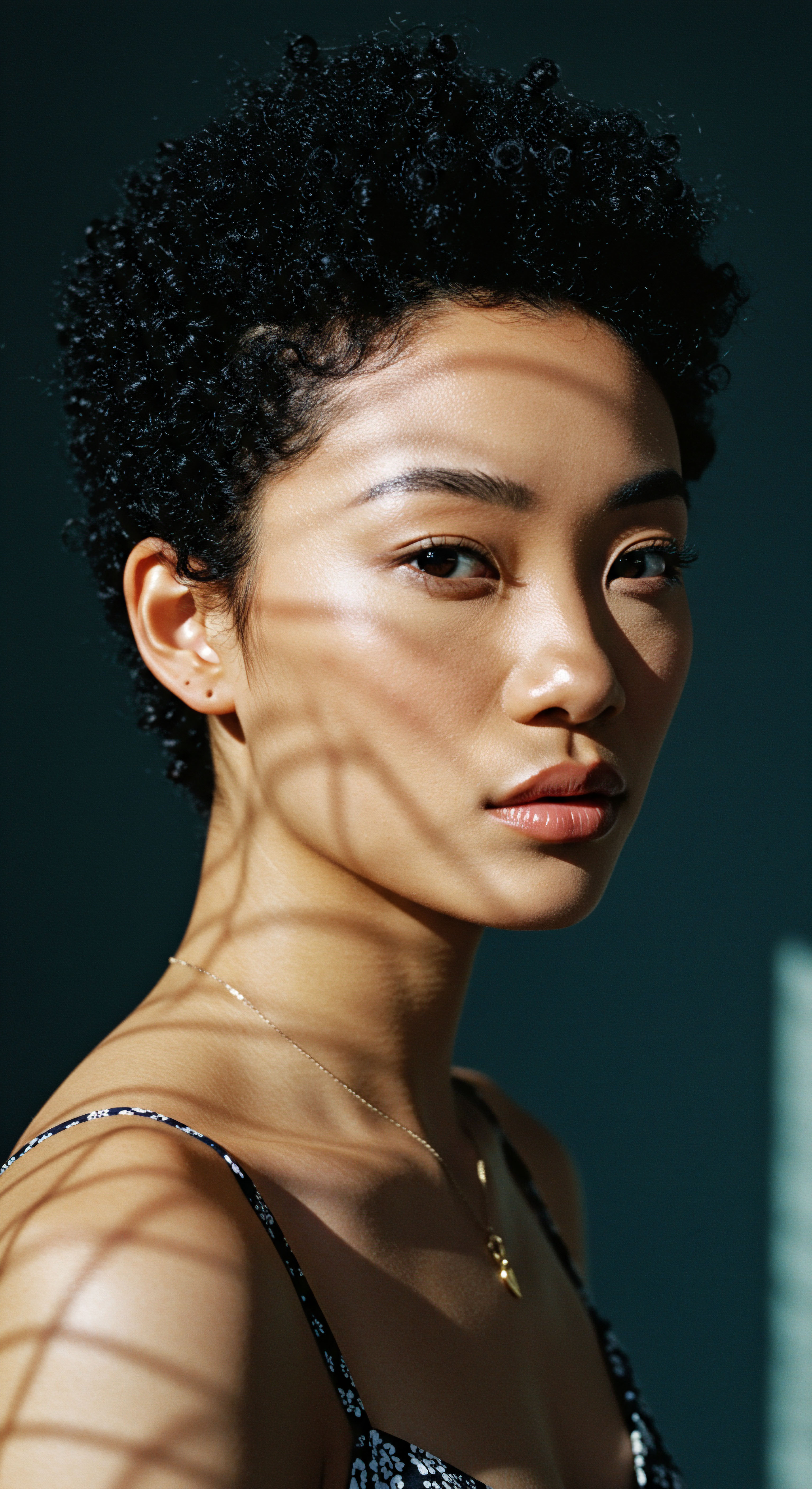
Protective Styling Beyond Aesthetics
The efficacy of protective styles against environmental stressors is remarkable. For example, in arid climates, tightly coiled hair, when left unbound, can quickly become brittle due to rapid moisture evaporation. Braids, twists, and various forms of hair wrapping significantly reduce the hair’s exposed surface area, thereby slowing down this evaporative process.
This allowed for sustained hydration, a critical factor in maintaining the hair’s pliability and strength in harsh conditions. Similarly, in dusty environments, styles that secured the hair close to the head prevented the accumulation of dirt and debris, keeping the scalp clean and reducing the need for frequent, potentially stripping, washes.
Beyond environmental defense, these styles offered social and practical benefits. They signified status, age, and tribal affiliation. They allowed for ease of movement during work or daily activities. The longevity of these styles meant less daily handling, a vital aspect for fragile coily hair, which can suffer from excessive manipulation.
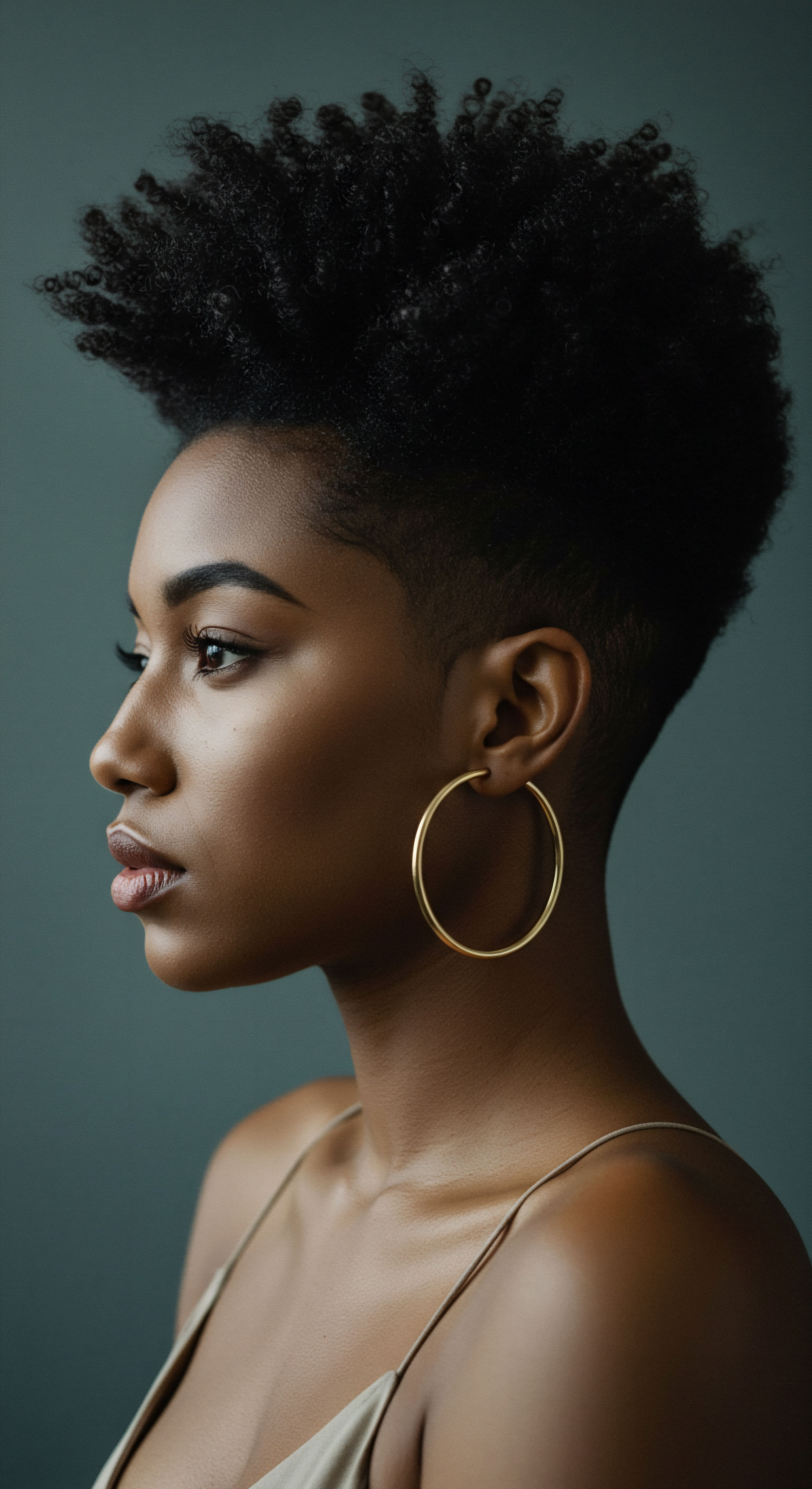
What Cleansing Methods Preserved Hair in Varied Climates?
Cleansing practices also varied significantly based on available resources and environmental needs. Harsh, stripping agents were largely absent. Instead, ancestral communities utilized natural ingredients that cleansed gently while often imparting conditioning benefits.
- Clay Washes ❉ Certain clays, such as rhassoul clay from Morocco, were used for centuries. These clays possess absorbent properties, drawing out impurities and excess oil without stripping the hair’s natural moisture. They also provided minerals that could fortify the hair.
- Herbal Infusions ❉ Plants rich in saponins, natural cleansing agents, were steeped in water to create mild washes. Examples include shikakai pods in India or soapberries (sapindus mukorossi). These infusions gently lifted dirt and residue while often leaving the hair soft and manageable.
- Fermented Grains and Waters ❉ In some regions, fermented rice water or other grain-based solutions were used for cleansing and conditioning. The fermentation process produces beneficial acids and nutrients that could support scalp health and add luster to the hair.
These methods demonstrate an intuitive understanding of pH balance and the need to maintain the hair’s natural barrier. By avoiding harsh detergents, ancestral practices helped preserve the hair’s integrity, making it more resilient against environmental stressors like pollution and dryness. The goal was not to strip, but to refresh and sustain.
| Ingredient Type Plant Oils |
| Common Examples Shea butter, Coconut oil, Baobab oil |
| Primary Environmental Benefit Moisture retention, UV protection, barrier creation |
| Ingredient Type Clays |
| Common Examples Rhassoul clay, Bentonite clay |
| Primary Environmental Benefit Gentle cleansing, impurity absorption |
| Ingredient Type Herbal Extracts |
| Common Examples Shikakai, Amla, Hibiscus |
| Primary Environmental Benefit Mild cleansing, conditioning, scalp soothing |
| Ingredient Type Plant Waters |
| Common Examples Fermented rice water, Rose water |
| Primary Environmental Benefit pH balancing, conditioning, hydration |
| Ingredient Type These natural elements provided protective and restorative qualities for hair exposed to various climates. |
The application of plant-derived oils and butters was another central aspect. Ingredients like shea butter, coconut oil, and various nut oils served as emollients, creating a protective layer on the hair shaft. This layer not only helped to seal in moisture but also provided a physical barrier against environmental aggressors, including UV radiation and particulate matter. The careful selection of these natural conditioners, often based on their local availability and observed efficacy, highlights a sophisticated botanical knowledge.
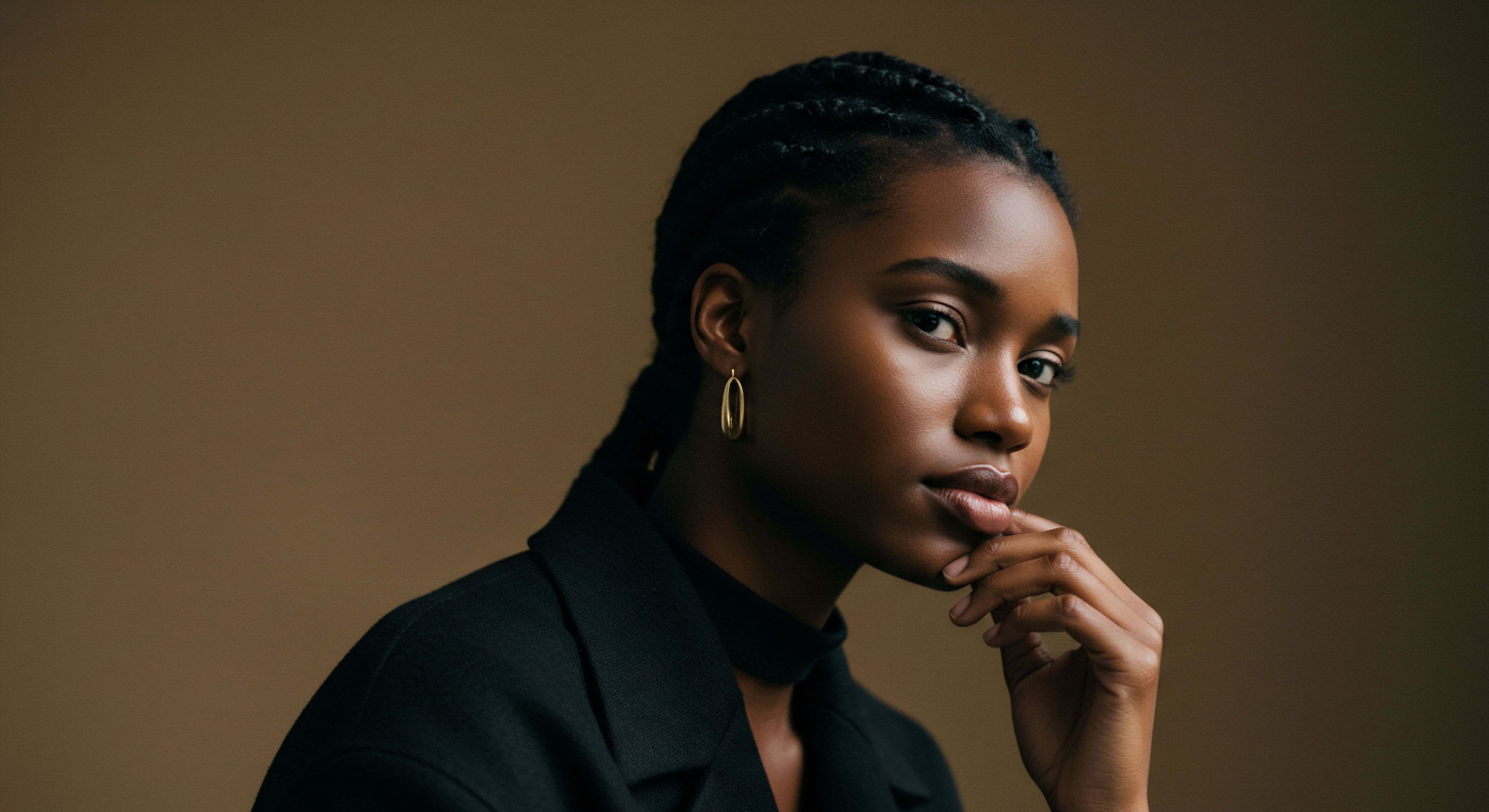
Relay
The deeper wisdom of ancestral hair care transcends simple practices, reaching into a profound understanding of ecological interplay and human well-being. Here, we step into a more intricate examination, where scientific principles underpin long-held traditions, and the influence of cultural context shapes every choice. The environmental factors confronting coils today, from microplastics to altered atmospheric conditions, find unexpected echoes, and often potent counterpoints, in the solutions devised by our forebears. This section seeks to connect the ancient with the contemporary, revealing the enduring relevance of practices honed over millennia.
The protective function of traditional head coverings, such as headwraps and bonnets, extends beyond mere aesthetic or cultural significance. These coverings acted as a crucial physical shield against direct sunlight, dust, and wind. In many African societies, for instance, headwraps were not only a symbol of status or marital state but also a practical garment for preserving hair health in sun-drenched, often dusty, environments. The fabric would absorb excess moisture from the air in humid conditions, or prevent rapid moisture loss in dry ones, thereby acting as a microclimate regulator for the hair and scalp.
Connecting ancient practices with modern science reveals enduring solutions for environmental challenges to coily hair.

Scientific Principles Behind Ancestral Practices
The effectiveness of ancestral practices often stemmed from an intuitive grasp of chemistry and physics. Consider the use of certain plant extracts for cleansing. While lacking modern laboratories, these communities understood the saponin content of plants, which creates a gentle lather and removes impurities without stripping natural oils.
This is particularly vital for coily hair, which already struggles with even oil distribution. By maintaining the hair’s lipid barrier, these methods ensured better protection against environmental dryness and damage.
Similarly, the application of natural oils and butters was a sophisticated form of conditioning and sealing. Many traditional oils, like shea butter (Butyrospermum parkii), possess a complex lipid profile that includes fatty acids, vitamins, and antioxidants. When applied to hair, these compounds form an occlusive layer that slows water evaporation from the hair shaft, a critical defense against arid conditions. They also offer some degree of natural UV protection, shielding hair proteins from degradation by sunlight.
A compelling example of this deep, almost prescient, understanding comes from the Mursi and Surma women of Ethiopia. They traditionally coat their hair with a mixture of clarified butter (ghee) and red ochre. This practice, while culturally significant, also provides remarkable protection against the intense sun and dry, dusty conditions of their environment.
The ghee acts as a powerful emollient and sealant, locking in moisture, while the red ochre, rich in iron oxides, serves as a natural sunblock, absorbing UV radiation before it can damage the hair shaft. This ancient practice, born of necessity and passed down through generations, directly addresses environmental factors with a precise, naturally derived solution.
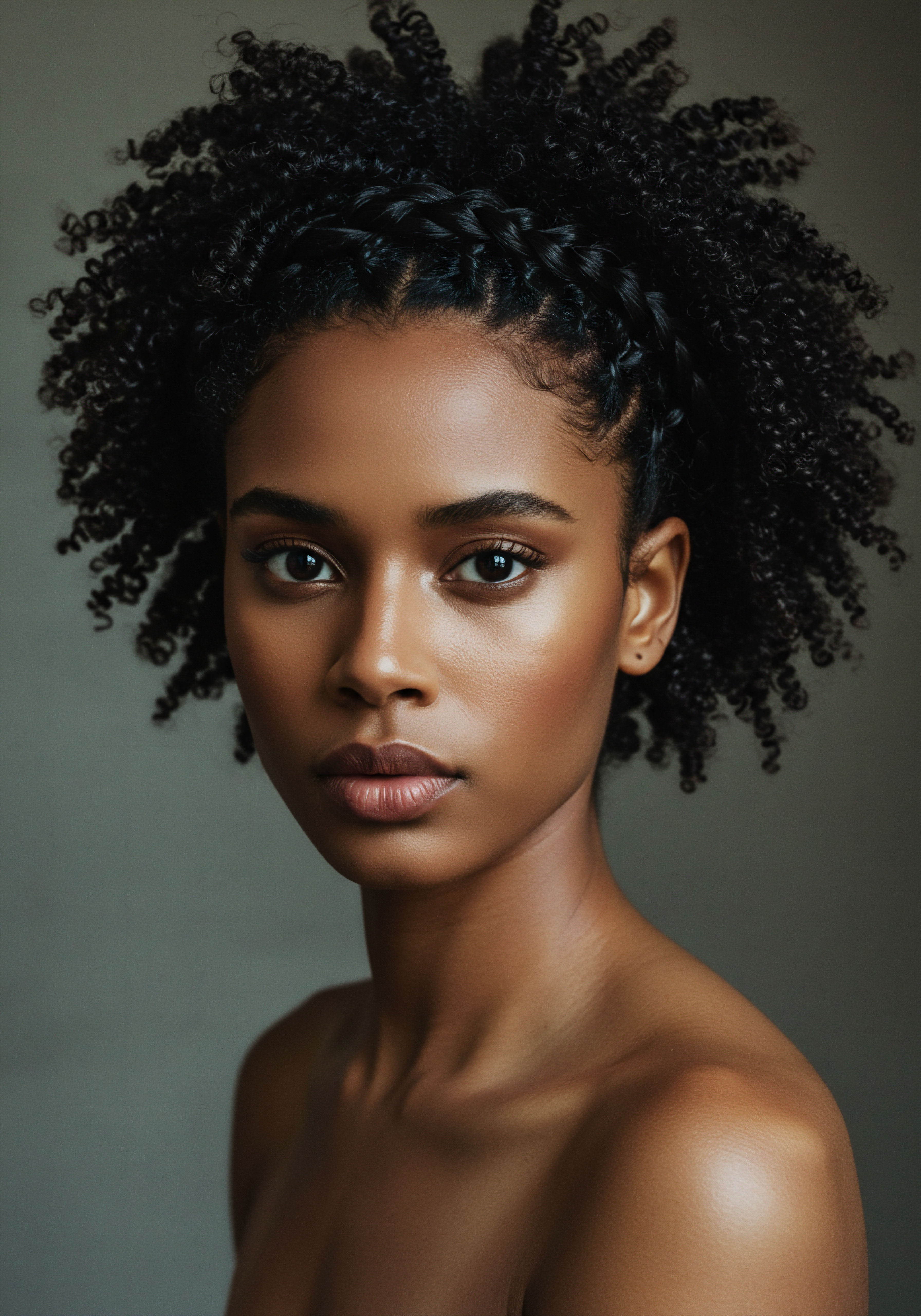
How Do Modern Environmental Challenges Intersect with Ancient Solutions?
Today, coiled hair faces environmental stressors that are both similar to and distinct from those of the past. While sun, wind, and dust persist, modern factors like industrial pollution, urban particulate matter, and hard water minerals add new layers of complexity. Yet, ancestral wisdom still offers pathways for mitigation.
For instance, air pollution contains microscopic particles (PM2.5) that can deposit on hair, leading to oxidative stress, dullness, and potential scalp irritation. Traditional cleansing agents, like certain clays or herbal rinses, with their gentle yet effective purifying properties, could offer a less abrasive alternative to modern shampoos that might strip hair already compromised by pollutants. A 2017 study published in the International Journal of Trichology indicated that exposure to particulate matter can lead to hair damage, including reduced protein content and increased oxidative stress.
While the study focused on general hair types, its findings underscore the heightened vulnerability of coily hair, given its larger surface area and propensity for product and environmental buildup. The ancestral practice of regular, gentle removal of environmental deposits, perhaps through herbal washes or even simple rinsing with filtered water, offers a timeless defense.
Hard water, prevalent in many urban areas, contains high concentrations of minerals like calcium and magnesium. These minerals can accumulate on hair, leading to stiffness, dullness, and difficulty with moisture absorption. Ancestral communities, often reliant on natural water sources, developed methods to soften water or counteract mineral buildup.
The use of acidic rinses, such as those made from fermented rice water or diluted fruit vinegars, can help to chelate these minerals, restoring the hair’s natural pH and cuticle smoothness. This aligns with modern scientific understanding of how acidic solutions can counteract alkaline mineral deposits.
The nightly ritual of covering hair, a common practice across many ancestral cultures, holds particular relevance in today’s varied indoor environments. Whether it was a simple wrap or a more elaborate bonnet, these coverings served to:
- Preserve Moisture ❉ They create a micro-environment around the hair, preventing rapid moisture loss to dry indoor air (e.g. from heating or air conditioning).
- Reduce Friction ❉ They protect hair from the abrasive effects of pillows and bedding, minimizing tangles and breakage that can be exacerbated by environmental stressors.
- Prevent Product Transfer ❉ They keep hair care products on the hair, rather than transferring to bedding, ensuring the benefits of applied oils and conditioners are maximized.
This simple, yet powerful, act demonstrates a continuity of wisdom. The delicate nature of coily hair, particularly susceptible to mechanical damage and environmental dehydration, finds a timeless ally in the practice of thoughtful nighttime protection.

Reflection
The enduring wisdom of ancestral hair care, a quiet conversation between generations and the natural world, continues to offer profound guidance. These practices, far from being relics of the past, provide a lens through which to reconsider our contemporary relationship with our coils and the environment. They invite us to slow down, to observe, and to respect the delicate balance required for true hair well-being. By honoring these ancient pathways, we not only protect our strands but also connect with a deeper understanding of self and heritage, allowing our hair to truly flourish, not just survive, in any climate.
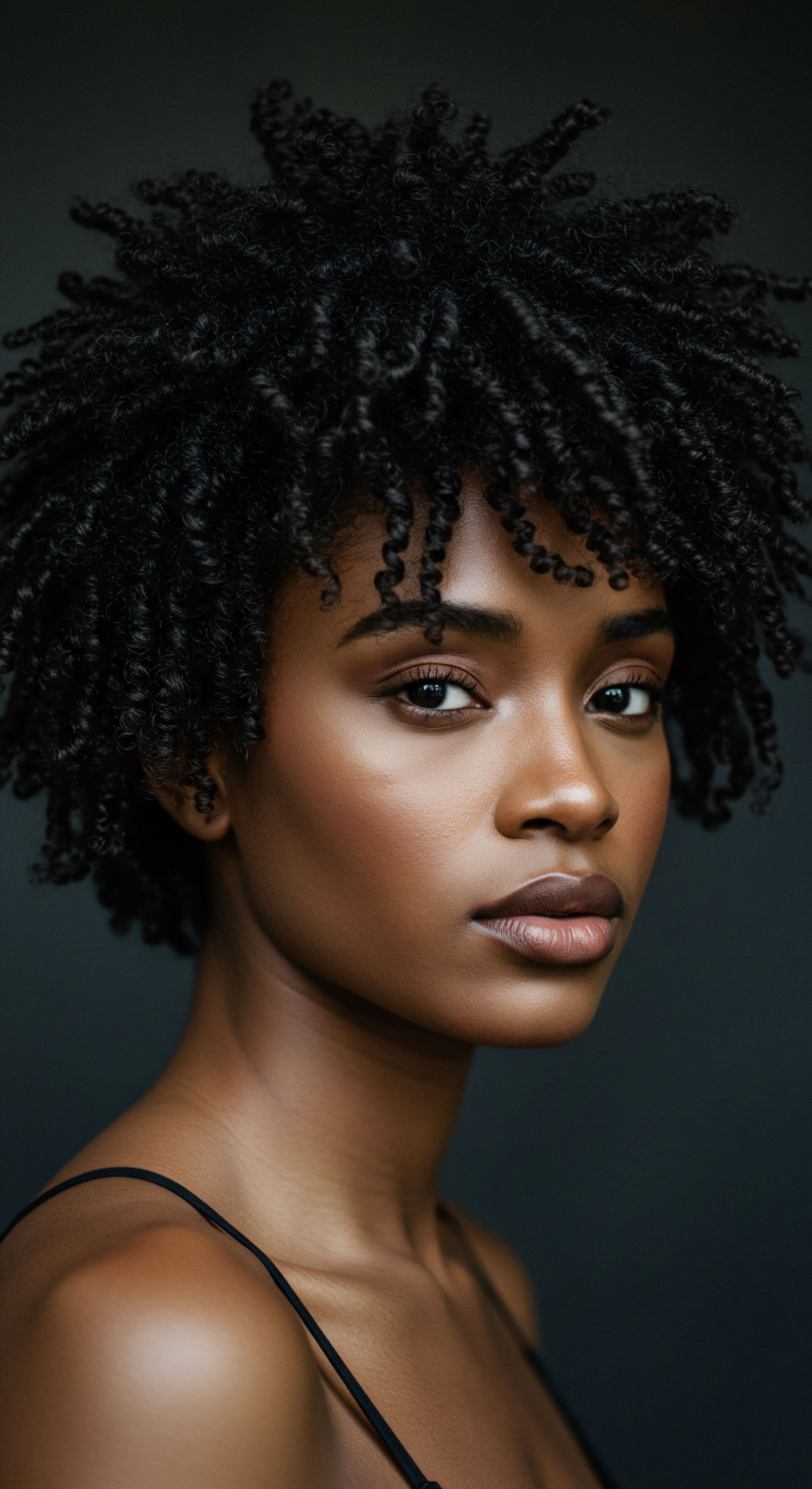
References
- Lee, W. S. & Han, J. J. (2017). The effect of particulate matter on hair. International Journal of Trichology, 9(3), 101–105.
- Salloum, M. J. (2012). The Art of African Hair Braiding. Random House.
- Draelos, Z. D. (2010). Cosmetic Dermatology ❉ Products and Procedures. Wiley-Blackwell.
- Robbins, C. R. (2012). Chemical and Physical Behavior of Human Hair. Springer.
- Opoku, A. (2015). African Hair ❉ Its Cultural Significance and Historical Context. University of Ghana Press.
- Onwubu, C. O. (1975). The cultural significance of the African hair-do. The Western Journal of Black Studies, 9(2), 103-107.
- Hotchkiss, A. T. (2011). Traditional Plant Foods of Indigenous Peoples of Northeastern North America. New York Botanical Garden Press.